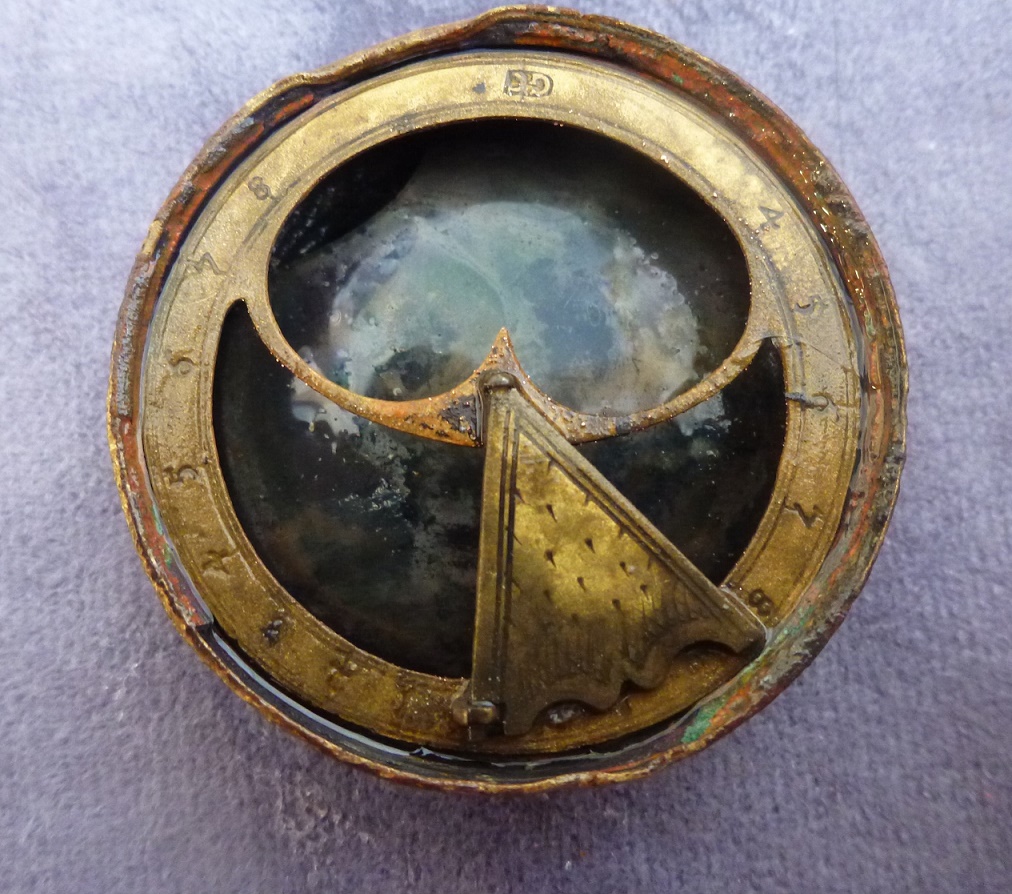In one of the biggest operations of its kind, archaeologists have succeeded in lifting a perfectly preserved 17th century English gun-carriage from the bottom of the Thames estuary.

the London, built by Oliver Cromwell’s government in the 1650s
[Credit: © MSDS Marine/Cotswold Archaeology]
It had been discovered in the wreck of the English warship, the London, built by Oliver Cromwell’s government in the 1650s.
The 1.6 metre long, 70 centimetre wide piece of artillery equipment would originally have held a 9 foot long cannon, capable of firing 24 pound cannon balls up to two miles.
The gun carriage has just been recovered with the help of a crane on-board a giant barge. The operation has been funded by Historic England.
Archaeologists will now study the carriage to try to determine whether the gun it held is one of those still believed to be on or under the seabed or whether it is one of the few that have already been brought to the surface.

the same type as on the London wreck
[Credit: Richard Endsor]
Specialists will also examine the carriage to discover what wood it was made of. Elm was preferred by the navy because it splintered less in combat and therefore reduced casualties. However in the 1650s, Dutch elm disease massively reduced the availability of elm wood in England – and naval carpenters in the late 1650s and the rest of that century were forced to use oak instead when making gun carriages.
The London broke in two and sank when the vessel exploded two miles off Southend, Essex in 1665.
“The newly raised gun carriage is a very important find and in remarkable condition” said Charles Trollope, a leading expert in 17th century naval artillery.

[Credit: © Maritime and Coastguard Agency]
Apart from a naval gun carriage at Windsor Castle, the newly raised artefact is the only known well-preserved example in existence. However it is possible that other well-preserved gun carriages still survive buried on the wreck site.
Its recovery has saved it from being destroyed by changing currents and sea worms that are increasing in English waters because of climate change.
Much of the archaeological investigation of the London wreck site has been carried out by volunteer divers from Southend. The newly raised gun carriage will now begin a long period of conservation.

blew up off Southend Pier in Essex in 1665
[Credit: © Steven Ellis]
Alison James, a Historic England maritime archaeologist, said: “This 350 year old gun carriage is in near-perfect condition. It’s a national treasure and the key to new knowledge of our social and naval history. We had to recover it quickly or it would have broken up and been lost forever.
“It’s complete with all the implements that the gunner would have used to make the cannon fire – all the archaeological material is there with it so it’s hugely exciting. Until now, it’s been well preserved, enclosed in an anaerobic environment, oxygen-free mud, safe from all the creepy-crawlies that would normally erode it. We’ve even got the 350 year old rope going through the pulley block. But as parts of the gun carriage recently became exposed, we had to act fast to save this rare piece of our history from the ravages of the waves and biological attack,” she said.
Author: David Keys | Source: Independent [August 14, 2015]